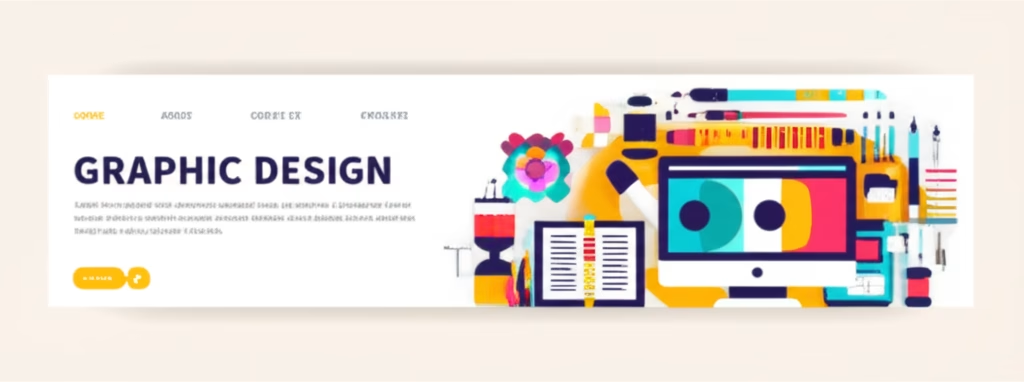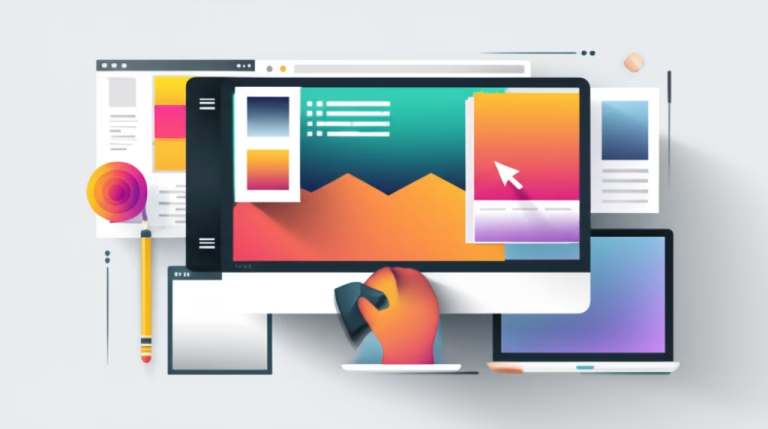Stepping into the world of design is exciting, but how do you show potential clients or employers what you can do? You need a portfolio! Think of it as your personal art gallery, showcasing your best work. For many aspiring designers, building a strong portfolio feels daunting, especially if you don’t have client work yet. But don’t worry, everyone starts somewhere. A compelling portfolio isn’t just a collection of images; it’s a story about your skills, your process, and your unique perspective. It’s the key that unlocks opportunities and helps you land your first design job. This guide will walk you through creating a portfolio that truly stands out.
Table of Contents
The Challenge Every Designer Faces
Landing your first design opportunity can feel like navigating a maze without a map. You’ve studied, you’ve practiced, but how do you prove to someone you have the skills they need? This is the core challenge: demonstrating your capability and potential in a clear, compelling way. Without a visible body of work, your talent remains unseen. Many aspiring designers struggle with this initial hurdle, unsure how to package their projects or even what kind of projects to include. An ineffective portfolio can make it hard to get noticed, leading to missed opportunities and frustration. The good news is that with the right approach, you can build a powerful tool that speaks volumes about your abilities and helps you connect with those looking for fresh talent. Your design portfolio is your most important asset in starting your design career.
The Science Behind Crafting a Standout Portfolio
A great portfolio works because it taps into fundamental human psychology. People are visual creatures, and a portfolio provides tangible, visual proof of your skills. It’s not enough to *say* you can design; you have to *show* it. A well-structured portfolio also tells a story, guiding the viewer through your thought process and problem-solving approach. This insight into your method is often as valuable as the final design itself. It shows you can think critically and strategically, not just make things look pretty. When someone sees your work presented thoughtfully, it builds trust and confidence in your abilities. It makes your potential feel real and achievable to them, increasing your chances of getting hired. This is why focusing on quality and presentation is so crucial in portfolio building.
Fundamental Principles
Quality over Quantity: It’s far better to showcase a few exceptional projects than many mediocre ones. Curate your best work that truly represents your skills and the type of design you want to do. Each piece should be a strong example of your talent.
Show Your Process: Don’t just show the final product. Include sketches, wireframes, mood boards, or iterations. Explaining your thinking demonstrates your problem-solving skills and provides context for your decisions.
Tell a Story: Frame each project as a case study. What was the problem you were trying to solve? What was your role? Who was the target audience? What was the outcome? This narrative engages the viewer and makes your work more memorable.
Keep it Clear and Easy to Navigate: Your portfolio should be user-friendly. Organize your projects logically, use clear headings, and ensure fast loading times. Make it effortless for visitors to explore your work and find what they’re looking for.
Tailor it to Your Audience: If you’re applying for a specific type of role or company, highlight projects that are most relevant to their needs. Show them you understand their world and can contribute effectively.
Practical Strategies for Building Your Portfolio
- Create Personal Projects:
When to use: If you lack professional experience.
How to apply: Design projects based on hypothetical briefs, redesign existing websites or apps, or create branding for fictional companies. These projects allow you to demonstrate your skills and creativity without needing a client. - Develop Case Studies:
When to use: For every project you include.
How to apply: Structure each project entry as a case study. Describe the challenge, your approach, your role, and the results. Use visuals to illustrate each stage of your process, from initial concept to final execution. - Tailor Your Presentation:
When to use: When applying for specific jobs.
How to apply: Create different versions of your portfolio or rearrange the order of projects to highlight the work most relevant to the job description. This shows potential employers you’ve done your homework and are a good fit. - Seek and Implement Feedback:
When to use: Throughout the portfolio building process.
How to apply: Share your portfolio with mentors, peers, or even potential employers for constructive criticism. Be open to feedback and use it to refine your presentation and project descriptions. - Build a Simple Website:
When to use: As your primary portfolio platform.
How to apply: Use website builders like Squarespace, Wix, or other platforms to create a clean, professional online portfolio. Ensure it’s mobile-responsive and easy to update.
Real Cases: When Portfolios Go Wrong
Learning from mistakes is a powerful way to improve. Many beginner designers encounter common pitfalls when creating their portfolios. Understanding these can help you avoid them and build a stronger presentation of your work.
Case 1: The “Everything Included” Approach
Problem: A designer includes every single project they’ve ever worked on, regardless of quality or relevance. The portfolio becomes a disorganized mess, overwhelming the viewer and hiding the truly good work.
Lesson: Curate ruthlessly. Focus on showcasing only your best pieces that align with your career goals. Quality trumps quantity every time. A focused portfolio is more impactful.
Case 2: Lack of Context
Problem: A portfolio shows only final images with no explanation of the project’s purpose, the designer’s role, or the process involved. The viewer sees nice pictures but doesn’t understand the thinking behind them.
Lesson: Provide context through case studies. Explain the problem, your solution, and your process. This demonstrates your problem-solving skills and strategic thinking, which are highly valued by employers looking to get hired.
Your Action Plan for Portfolio Success
Building a great portfolio is an ongoing process. Here’s a simple plan to get you started and keep you moving forward:
- Today: Gather all your existing design projects, including personal work, school assignments, and any freelance pieces. Organize them into folders on your computer.
- This Week: Select your top 3-5 projects that best represent your skills and the type of design you want to pursue. Start outlining the case study for each selected project, focusing on the problem, your process, and the outcome.
- This Month: Choose a platform (like a website builder) and start building your online portfolio. Upload your selected projects and write the case studies. Focus on clear visuals and easy navigation.
- Next 3 Months: Actively seek feedback on your portfolio from experienced designers. Refine your projects and case studies based on the feedback. Start applying for entry-level design jobs, tailoring your portfolio presentation for each application to improve your chances of landing a design job.
Clear Your Doubts about Design Portfolios
Q: What if I don’t have any professional client work?
A: Focus on personal projects, hypothetical briefs, or pro bono work for non-profits. These are excellent ways to demonstrate your skills.
Q: How many projects should I include in my portfolio?
A: Aim for 3-5 high-quality projects when you’re starting. As you gain experience, you can expand, but always prioritize quality and relevance.
The Next Step in Your Journey
Crafting a compelling design portfolio is a crucial step in launching your design career. It’s a dynamic tool that will evolve as you grow as a designer. By focusing on quality, storytelling, and clear presentation, you can create a portfolio that not only showcases your skills but also captures the attention of those who can help you achieve your goals. Keep refining your work, seeking feedback, and updating your portfolio regularly. Your journey as a beginner designer is just beginning, and a strong portfolio is your passport to exciting opportunities.
Continue evolving with our guide about getting your first design job!



